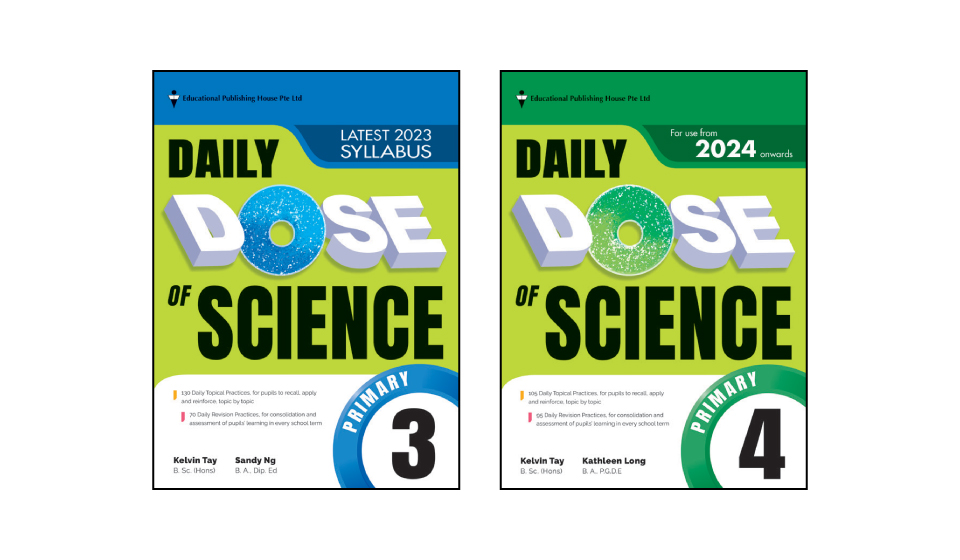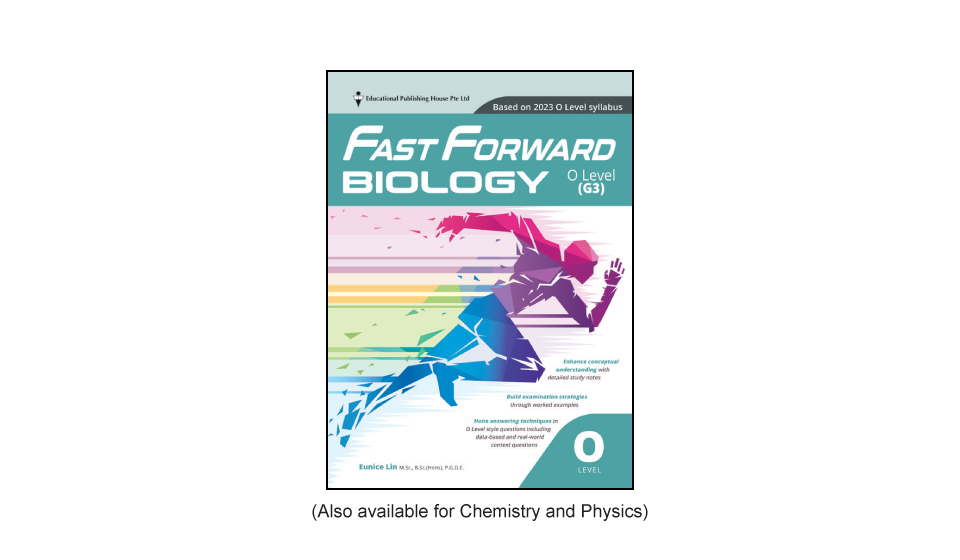About Us
Members Enjoy 10% Off Storewide – Sign In to Save Instantly!




Nov 2024

Give your child an academic edge in Primary Science through progressive learning.
Nov 2024 | By Edmund Ong from Crucible Education Centre
The updated Science Curriculum Framework is designed to cultivate a generation of pupils who are not only knowledgeable but also skilled in critical thinking and problem solving. This new approach moves away from rote learning, focusing instead on fostering a deeper understanding of scientific concepts through inquiry-based learning and real-world applications. By emphasising hands-on experiments, data analysis, and collaborative projects, the syllabus aims to develop pupils’ ability to ask questions, investigate phenomena, and draw evidence-based conclusions.
This shift is intended to prepare pupils for a rapidly changing world where the ability to think critically and adapt to new information is crucial. They are expected to master basic scientific concepts as part of fundamental understanding before learning to draw connections. A strong emphasis is placed on higher-order thinking skills, practical skills, and experimental skills.
The glossary of terms is also updated to include terms such as ‘Formulate hypothesis’, ‘Solve problem’, ‘Make decisions’, and ‘Use apparatus and equipment’.
Progressive Learning
With this shift in emphasis in the Primary Science curriculum, progressive learning stands out as a proven pedagogy for achieving an academic edge. This is because this method of gradually building knowledge not only deepens understanding more effectively but also leverages cognitive science insights to maximise pupils’ academic potential.
First, progressive learning capitalises on the cognitive science principle of scaffolding, where new information is presented in a way that connects to what pupils already know. This helps pupils better map out and draw links between topics, thereby enhancing comprehension. Over time, this approach enables pupils to establish a solid foundation in science and tackle increasingly complex topics with confidence.
Second, at its core, progressive learning is in line with the well-established principle of spaced repetition, which suggests that information is retained more effectively when learned over time rather than by cramming. By introducing scientific concepts in a structured, step-by-step manner, progressive learning ensures that pupils revisit and reinforce knowledge, leading to long-term retention and mastery.
Through progressive learning, pupils also become more aware of their own learning processes and can thus develop personalised strategies to overcome their learning challenges. Paired with assessment materials that integrate progressive learning principles such as the Science Progressive Practice ($12.90 each) series by Educational Publishing House, this approach equips pupils with the tools to develop critical thinking and problem-solving skills to achieve academic excellence.
Aug 2024

Author of the Primary Science Topical & Thematic Tests series, Nelson Tng, shares about his passion for science and the importance of continuous practice.
Aug 2024 | By Nelson Tng & EPH Editorial Team
Author of the Primary Science Topical & Thematic Tests series ($12.90 each) and founder of ScienceGuy Learning, Nelson Tng’s passion for the subject is reflected in his motto, ‘Love Science! To Learn Science!’. Tapping on his experience as a Primary Science Specialist and a former MOE Primary School teacher of more than 16 years, the EPH Editorial Team hears from him on how continuous practice helps pupils achieve excellent grades in their science tests.
Q How did you get started with teaching and writing about science?
My love for interacting with people made me a teacher, and having taught science for so many years in MOE schools, I am very much into writing about science. Science can explain everything in this world! My teaching and writing are meant to simply spread the good word of science to every pupil learning it.
Q What kind of challenges do pupils face while preparing for their science exams and how can they overcome them?
Some pupils only study content and may lack practice on how to produce written answers for said content. They may verbalise content well but do not necessarily know how to apply it in written form. Such pupils should get ample topical practice on writing out answers for the specific topics learnt. On the other hand, some pupils struggle to see the links between topics. These pupils should attempt thematic tests comprising questions from various topics blended together. Such questions allow pupils to learn how to apply multiple concepts simultaneously to craft a complete response to each question.
Pupils can overcome their learning gaps by practising a variety of science questions regularly. Continuous practice helps pupils pick up process skills such as data analysis, observational skills, making predictions, and generating possibilities, among others. Over time, getting the hang of key concepts and answering techniques such as the CER (Claim-Evidence-Reason) approach as recommended by the MOE for application-type questions will also become easier.
Q How can the Primary Science Topical & Thematic Tests series help pupils ace science?
This series has been purposefully crafted to include commonly tested questions, including those in which pupils frequently make mistakes. Key words and phrases, along with the marking scheme, are also given in the answer key for pupils to conduct self-checks. The detailed explanations provided in the answer key for multiplechoice questions further serve as quick notes, reinforcing the subject matter learnt. Pupils can utilise this resource to address their misconceptions and score better in their exams!
May 2024

Effective from 2024, here’s how the new Primary 4 Science syllabus differs from the old one.
May 2024 | By EPH Editorial Team
The Primary Science syllabus comprises three components: core ideas, practices, and values, ethics, and attitudes. Five themes — Diversity, Cycles, Interactions, Systems, and Energy — make up the core ideas that encompass the essential concepts of both life and physical sciences. From 2024, a new P4 Science syllabus has come into effect, bringing with it significant changes to the learning trajectory of pupils across all schools.
Of the various changes, two stand out the most. First, the syllabus will no longer be organised into Lower Block (P3/P4) and Upper Block (P5/P6). From 2023, each level will have its own corresponding syllabus. Second, the core themes and the sequence in which they are taught are now fixed and standardised across all schools. Previously, themes taught in P3/P4 were interchangeable and the sequence was at the discretion of individual schools.
For a useful comparison of content covered in the old and new P4 Science syllabuses, you may refer to the table shown here.
To keep pace with the new syllabus, pupils can rely on a comprehensive notes-and-practice package from Educational Publishing House consisting of Primary 4 Science Notes & Practice ($15.90), Primary 4 Science Practice ($15.90), and Primary 4 Science Tests ($13.50). Notes & Practice adopts a holistic approach comprising study notes, worked examples, practices, and reviews that tie in closely with the school textbook. The ‘CER’ feature is also incorporated to encourage scientific enquiry. In addition, through topical questions of various difficulty levels and experiment-centred questions from Science Practice and Science Tests, pupils can further solidify their understanding, fully grasp the subject matter, and develop higher-order thinking skills to score in tests and examinations.

Mar 2024

Here are four useful study tips to put you on the path to acing your science exams.
Mar 2024 | By Sandy Ng, co-author of P3 Daily Dose of Science
Success in science exams requires a combination of good knowledge of concepts, sufficient preparation, strategic thinking, and a strong dose of tenacity. Use the following four steps to prepare, perform better, and handle the challenges of your exams with renewed confidence.
1 Consistent Revision
There is no shortcut to becoming familiar with concepts. Consistent revision boosts retention, builds foundation, and improves understanding and application of concepts. Make it a point to consolidate and review knowledge learned in class daily and you’ll get into the good habit of doing so in no time.
2 Memorise Standard Answers
We all need help to get started. Memorising standard answers allows you to quickly recall information so that your answers are precise and coherent in the exams. Standard answers are the foundation on which you apply scientific concepts based on the different contexts given. You can then further modify these answers in your own words. Make your own summary sheets and flashcards of standard answers and rope in your parents, siblings, and friends to test you regularly.
3 Practise Different Types of Questions
Attempt past-year exam papers and assessment books regularly, as they provide a wide array of inquiry-based questions where you can hone your understanding of scientific concepts. You will also become more familiar with the exam format, types of questions asked, and recurring themes in the process.
4 Self-Imposed Time Limit
When you adopt a self-imposed time limit in your practices, you learn to allocate time more wisely and ensure all questions are given sufficient thought. This approach also develops your ability to think under pressure, especially when tackling challenging questions which require careful consideration. The general recommendation is to allocate 45 minutes for Section A and 1 hour for Section B. Start with more flexible time intervals and gradually work towards the suggested duration once you get the hang of it. If you need a visual reminder to keep track of time, place a clock in front of you as you work.
Academic progress takes dedication and proactiveness. Commit yourself to the four steps above and your efforts will certainly pay off in your exams. To supplement your revision, you may also utilise the Daily Dose of Science series ($17.90 each) as a daily review companion. This series provides a good range of questions based on real-world applications and comes with suggested answers and explanations to cater for self-directed learning.
Nov 2023

What’s in store for the new O-Level Pure Biology examination next year?
Nov 2023 | By EPH Editorial Team
As 2023 draws to a close, it also marks the end of the present O-Level Science syllabuses. Soon-to-be Secondary 4 students may wonder: how will the 2024 O-Level Science examinations differ from the ones their seniors sat for? In the Mar/Apr 2023 issue, the changes to the syllabuses were discussed. In this issue, let’s explore the changes to the examination structure, specifically for Pure Biology.
For Pure Biology, the number of papers will remain the same — three altogether. The duration, total marks, and overall weighting will remain the same too. Here is the breakdown:

No Changes to Structure: Papers 1 and 3
There will be 40 compulsory multiple-choice questions in Paper 1. As the duration will only be an hour, students are advised to spend no more than 1.5 minutes on each question. Also, as there will be no penalty for wrong answers, students are advised to attempt all questions even if they are unsure of the correct answer.
For Paper 3, there will be two to three compulsory questions, each with various parts. While some sections of the syllabus may not have experiments that are feasible within the duration of the paper or constraints of the school’s laboratory inventory, questions on these may still be tested. For example, students may be asked to plan the experiment without actually carrying it out and such questions may be worth up to 5 marks.
Changes to Structure: Paper 2
For Paper 2, while there will still be two sections (A and B), the marks distribution will differ from the present marking scheme. Section A will carry 70 marks (an increase from the present 50 marks) and Section B will carry 10 marks (a decrease from the present 30 marks).
All questions in Section A will be compulsory, including one free-response question and one data-based question as the last two questions. Section B will offer students a choice of one out of two free-response questions to answer. As these data-based and free-response questions may be challenging, students are encouraged to practise diligently with assessment books such as O Level (G3) Fast Forward Biology ($19.90) from Educational Publishing House to instil confidence for the examination.
Customer Care
Retail Stores
Corporate Sales
About Us
Customer Care
Retail Stores
Members
Corporate Sales
Gift Voucher

© Copyright 2025 Popular Book Company Pte Ltd .197500612M All Rights Reserved.

